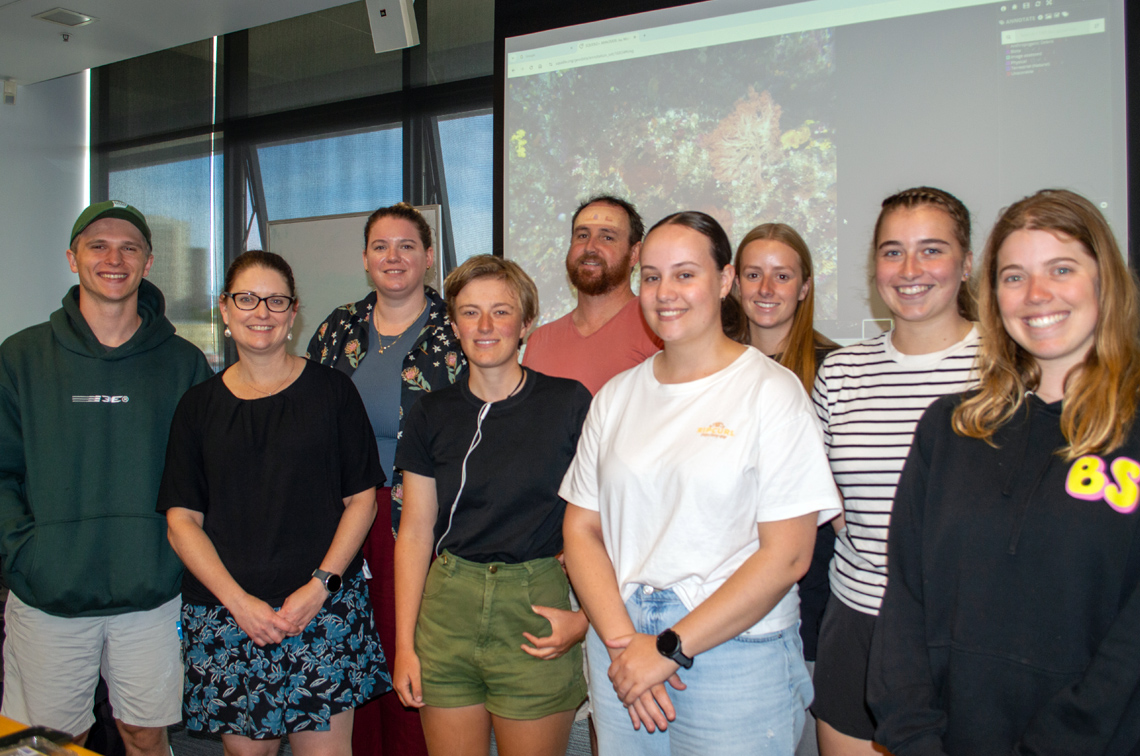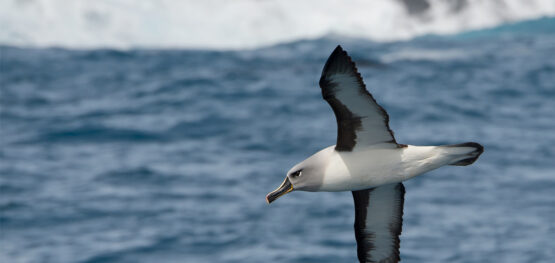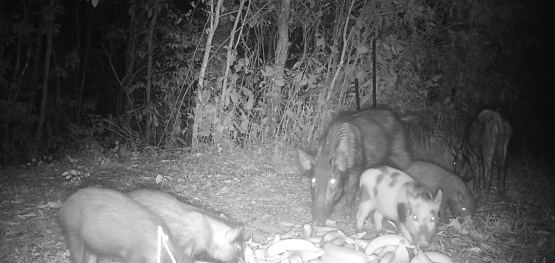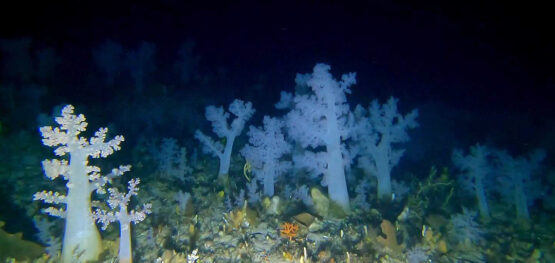Article
27 March 2025
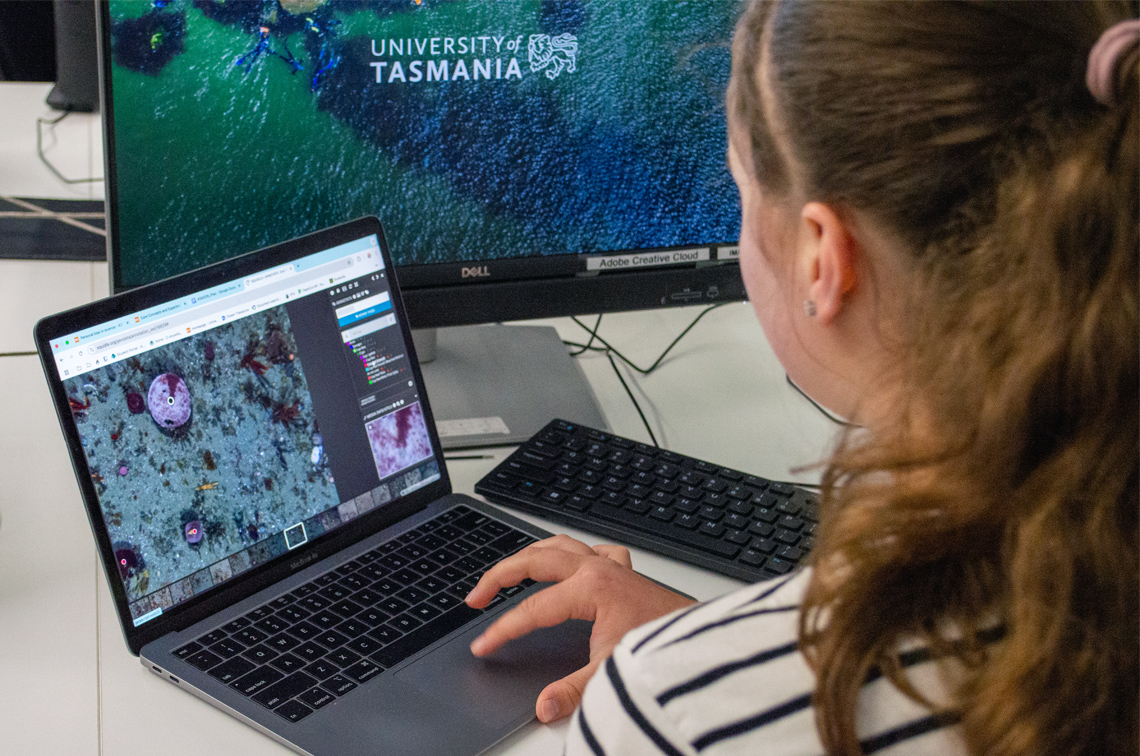
The starting point of a career can be a place to channel our burning interests. It can also be a time of uncertainty. Fortunately, intuition and support show the way. These stories highlight examples of how the hub offers opportunities for young marine scientists to build skills essential to Australia's future.
Eloise Wilson-Mayne: readying data for decisions about windfarm development
In 2015, when it was time for Eloise Wilson-Mayne to decide what to study for her bachelor's degree, a passion for understanding things at their fundamental level led her to choose mathematics and physics at the University of Tasmania.
There, she became engaged with the problem-solving challenges that come with this field and developed an interest in helping others through tutoring. These remain her biggest drivers. “There was something very satisfying for me in helping people, passing on knowledge, and figuring out how to explain things,” she says.
During her honours research, Eloise focused on beginning the process of modeling and predicting unwanted currents in Magnetic Resonance Imaging (MRI) machines. In other words, she started down the path to mathematically finding the source of the noise in these machines, a project that continued during her PhD studies.
Wanting to work outside of academia, Eloise had her first experience of marine science data with the weather team at CSIRO and in November last year, she joined the Marine and Coastal Hub. As part of her role, she is hunting data sources for cetaceans (whales and dolphins) and birds to support a model that will assess the risk to key species from offshore windfarm developments.
Collecting relevant data is not always a straightforward task, but Eloise loves a good challenge, especially if it keeps her close to science. In her work with the hub, she is learning where and how to find data efficiently and the standards of data sources. “It’s opened my eyes to the amount of research and datasets that exist in all corners of Australia,” she says.
By building her path into this field, she is contributing to making the best available environmental data accessible for environmental regulators, industry and environmental custodians. As stated in the Australian Government’s Nature Positive Plan, better data improves the ability to prioritise, coordinate and assess the effectiveness of regulation and investment to protect the environment.
Jack Hill: sharing knowledge to protect coastal wetlands
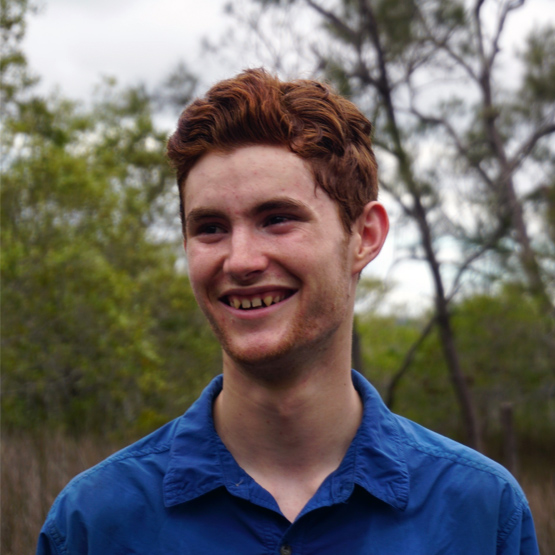
A postdoctoral position at the Marine and Coastal Hub presented Jack Hill with an opportunity to collaborate on Country and integrate his expertise in coastal wetlands with Traditional Owners’ knowledge.
In 2019, he finished his bachelor of science degree at The University of Queensland and began PhD studies looking into mangrove tree architecture and the way it links with ecosystem functions.
“For example, we excavated underground roots and tested the strength of mangrove trees to see how they might respond to cyclones and tsunamis,” he says. One of the interesting findings of this research was that mangroves were twice as strong as terrestrial trees (per unit tree size), “and that made sense because they experience strong wind and wave activity every day”.
Jack was aware that his PhD project lacked collaboration with Traditional Owners, so he was excited when his supervisor Prof. Catherine Lovelock raised the opportunity of joining a hub project a year ago. “It was not just working with Traditional Owners but actively trying to address something they have wanted for decades: a better way to protect their wetlands from feral animals,” he says.
One of the highlights of this experience has been the chance to work with researchers such as Dr Justin Perry, research manager for the North Australian Indigenous Land and Sea Management Alliance. He has experience with feral animal control on Country throughout northern Australia and has extensive knowledge of the impacts of feral ungulates (hoofed animals) on biodiversity, carbon and culture.
“Also, every Traditional Owner who has so generously shown us their Country, and shared their wealth of knowledge and lived experience,” Jack says. “We’ve had the privilege to talk to Elders and young Indigenous Rangers who are dedicated to doing big things for their Country and communities.”
This hub project successfully secured prioritisation from the Australian Government’s Emissions Reduction Assurance Committee to develop a new Australian carbon market method for feral ungulate control in 2025.
“The big idea is that if we can control feral ungulates in wetlands, we can reduce greenhouse gas emissions,” Jack says. “That might allow Traditional Owners and others to earn carbon credits, which can be sold to fund ongoing management activities.”
Learning new tools for assessing underwater imagery
In late February, hub project leader Jacquomo Monk led two underwater imagery training sessions at the University of Tasmania's Institute for Marine and Antarctic Studies (IMAS). Students used hub imagery to quantify changes in kelp cover and track trends in sponge bleaching. The Squidle+ platform (funded by the Integrated Marine Observing System) enabled the students to annotate their own datasets and gain hands-on experience with statistical methods.
